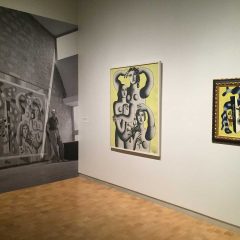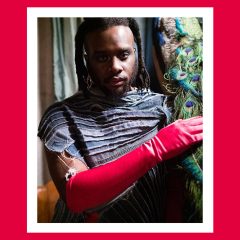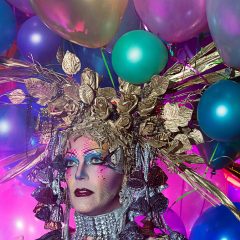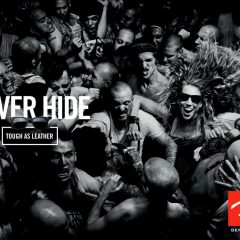Edward Maeder is the former curator of Costumes and Textiles at the L.A. County Museum of Art and later at historic Deerfield. Maeder has more recently taken up the mantle of artist and “needleman.” His exquisite paper dress creations are made of Q-tips, coffee filters and other found papers. The inspiration for these art objects are 18th-century fashion. The public can view the creation of one of these masterpieces during Edwards Maeder’s MaederMade Pop-Up Studio residency Feb. 5 to 20 in the Green on Greene Building, Greene Street and Carpenter’s Lane, Philadelphia (artist’s talk and workshops information at the bottom of the post). I called Maeder in Connecticut via SKYPE–my first SKYPE interview. It was unsettling.
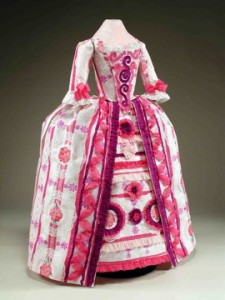
CA- How important has needlework been to human history?
EM- Needlework is one of the earliest forms of expression, for both artistic expression and practical work, it was essential for clothing.
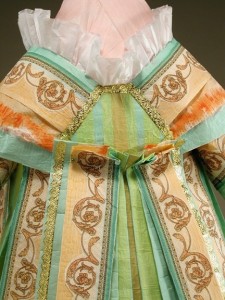
CA-Have you invented a new needlework technique?
EM- Actually I’m not sure that there are any new techniques; people have been at it for over 20 thousand years. Practically every piece of needle work is unique; if it’s done by hand it’s unique. There is nothing as good as the human hand. The human hand combined with the eye and brain can do anything when it comes to needle work and most forms of art.
CA- Argyle- friend or foe?
EM- A place in Scotland (laughs). It becomes a friend from time to time. Argle is just really just a knitted form of plaid.
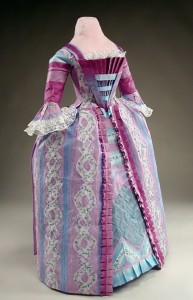
CA- When a woman wears stiletto heels, has she successfully objectified herself?
EM- I’m glad you mentioned heels.
CA- Stiletto specifically.
EM-Stilettos are specific.
CA- (laughs)
EM- (laughs) I have a theory why women wear stiletto heels.
CA- Tell me.
EM- Because she can. The first heels were worn by men in the court of Louis XIV to make their calves larger. Even today, the most fashionable form of plastic surgery for men is calf implants.
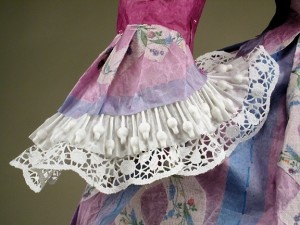
CA-Will men’s clothing ever reach the creative expression of women’s garments?
EM- There were times when it surpassed. Back in the days of Carnaby Street in the late 1960s men in fact were peacocks. The clothes were colorful, outrageous and eccentric. In the 18th century as well, and it was the same during the Renaissance, men rivaled women.
CA- Will clothes clean themselves in the future?
EM- We have been threatened with that. There will never be a natural fiber that can clean itself, and I’m only interested in natural fibers.
CA- Why are men’s buttons on the right and women’s buttons on the left?
EM- This is not easily solved; one theory is women’s buttons are on the left because she is being dressed by a servant.
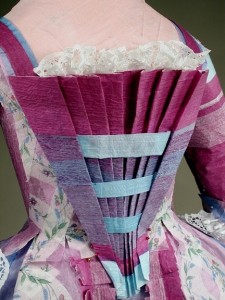
CA- Can you explain the staying power of the tee shirt?
EM- I think it has to do with the society becoming increasingly lazy. We are obsessed with comfort and you must remember that comfort is something very modern. In the 18th century comfort was not known or understood.
CA- What ever happen to Elsa Klensch*?
EM- She was a powerful lady. I met her when I was in New York at FIT. I don’t know what happened to her.
CA- Should one aspire to be fashionable or stylish?
EM- Stylish. Fashionable is following the herd. Style is what suits you and makes you look beautiful.
CA- With that said, are fashionistas mind-controlled slaves?
EM- Fashion is whatever anybody wants it to be. There seem to be no criteria, any one can wear anything. However if it suits them or doesn’t–that decision will be made by people viewing them.
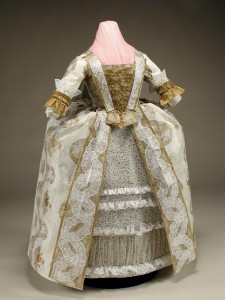
CA-What would it take for me to escape the influences of fashion?
EM-Perhaps being blind is the only way that you could escape. The time in which we live completely influences everything we do. Everything we create is based on the aesthetic of the time. If it’s 1934, everything is cut on a bias.
CA- Who makes these decisions about fashion?
EM- It’s a combination of factors. One is the availability of materials and what the leading designers are creating. In the 1930s designers like Coco Chanel made dresses on the bias. This was something completely new–it was as new as surrealist art. Fabric on the bias is unstable, which is why it was never used.
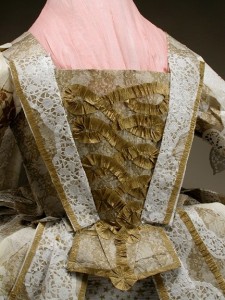
CA- Was the Italian Renaissance artificially activated.?
EM- The forces were intellectual. It was questioning the total authority of the church; it was the discovery of ancient civilizations. The Italian Renaissance is really a rediscovery, a rebirth intellectually, historical and certainly visual.
CA- Coverlet, will it make a come back?
EM- Within a certain group in society it never left. They are a very important American art form.
CA- At what point in history did the patriarchy start to dictate women’s fashion?
EM- I’m not sure the patriarchy ever did dictate women’s fashion.
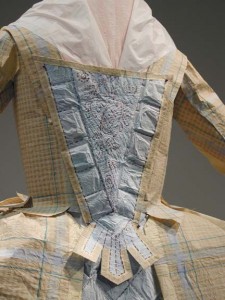
CA- Really?
EM- Women dress for other women. Women’s aesthetics were invaded by fashion magazines and film. Film is perhaps the greatest influence of all.
CA- But wasn’t it men (directors,producers,writers) who were in charge of what things look like on film, the power of suggestion?
EM- Absolutely, absolutely.
CA- Did you play with dolls when you were a child?
EM- Oh of course. I made circle skirts for my sister’s dolls out of dryer lint that I sprayed with hair spray and ironed between wax paper in order to make felt; of course I did. I made my dog a whole wardrobe.
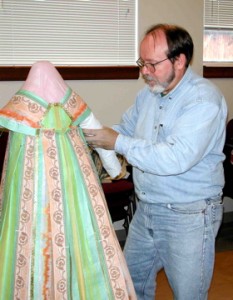
CA- What are your thoughts on the color green being the most rejected color in nature?
EM- Well, I can tell you historically green is fascinating. It’s the sacred color of Islam. In 1495 and the first decade of the 16th century, green was forbidden to be worn by Christians in Venice, Italy. There was a law forbidding the wearing of green.
CA- The paper dress is?
EM- Flammable.
CA- Are you everything you set out to be?
EM- Almost.
*Elsa Klensch was the host and producer of the iconic CNN show “Style with Elsa Klench” from 1980-2001. (She taught me about aesthetics via TV when I lived in Germany–Corey).
Maeder will give a talk, “Color: Historic Inspiration” Feb 12, 4-5 p.m., $10, students $5.
He will lead workshops in creating accessories from found papers and vintage silks (some of the workshops appropriate for children). For information and fees visit maedermade blog. Reservations strongly advised. For further information contact contact Pam Rogow at 215 842-1040, or email MaederMade@gmail.com. All events at Green on Greene Bldg.


